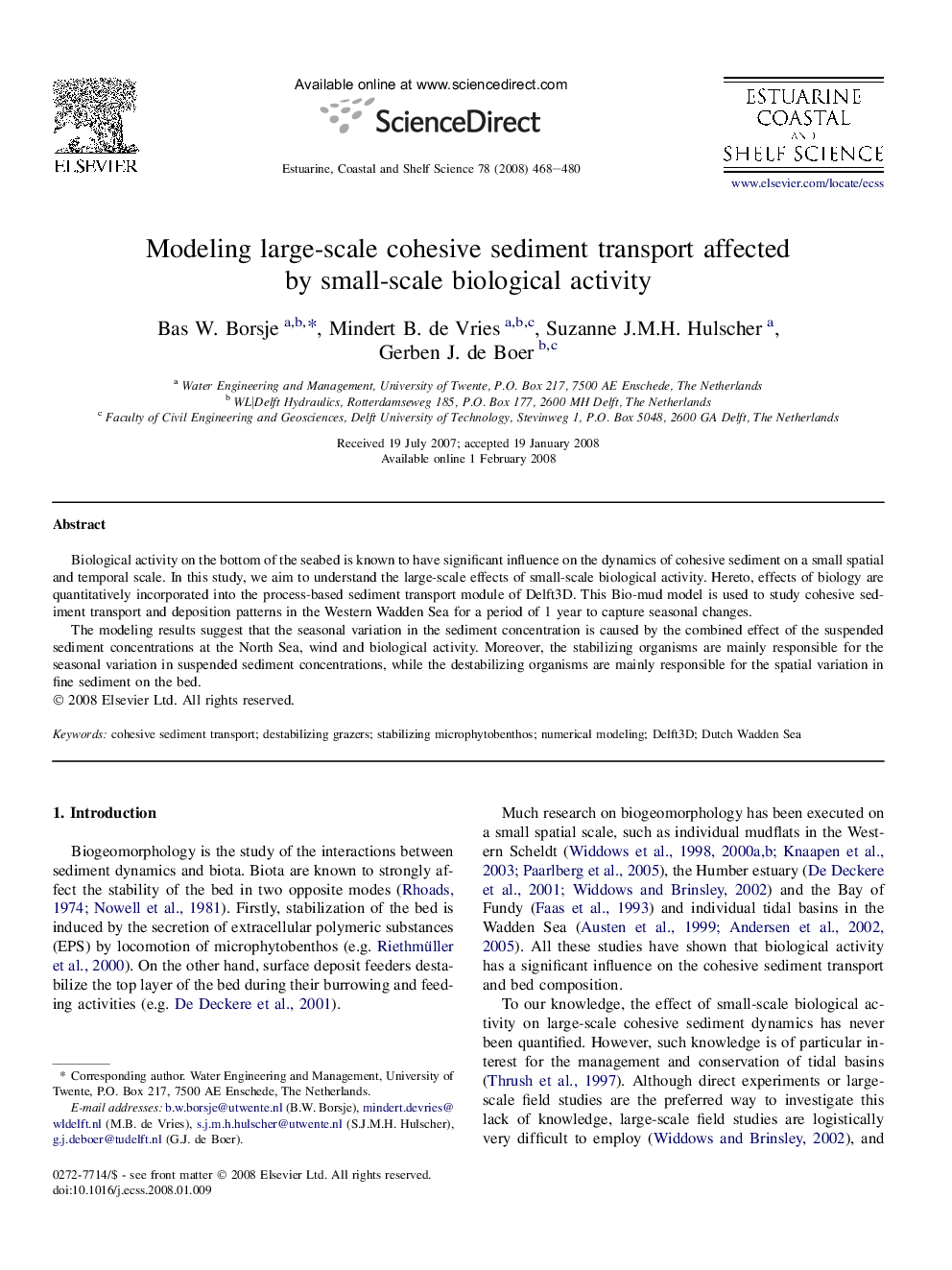| Article ID | Journal | Published Year | Pages | File Type |
|---|---|---|---|---|
| 4541918 | Estuarine, Coastal and Shelf Science | 2008 | 13 Pages |
Biological activity on the bottom of the seabed is known to have significant influence on the dynamics of cohesive sediment on a small spatial and temporal scale. In this study, we aim to understand the large-scale effects of small-scale biological activity. Hereto, effects of biology are quantitatively incorporated into the process-based sediment transport module of Delft3D. This Bio-mud model is used to study cohesive sediment transport and deposition patterns in the Western Wadden Sea for a period of 1 year to capture seasonal changes.The modeling results suggest that the seasonal variation in the sediment concentration is caused by the combined effect of the suspended sediment concentrations at the North Sea, wind and biological activity. Moreover, the stabilizing organisms are mainly responsible for the seasonal variation in suspended sediment concentrations, while the destabilizing organisms are mainly responsible for the spatial variation in fine sediment on the bed.
